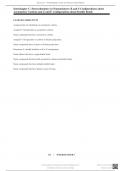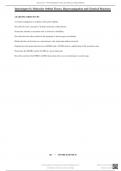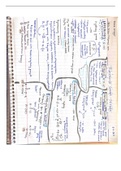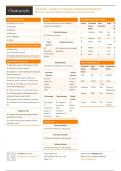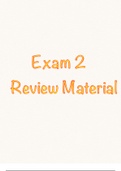Chem301 Study guides, Class notes & Summaries
Looking for the best study guides, study notes and summaries about Chem301? On this page you'll find 16 study documents about Chem301.
All 16 results
Sort by
This is the Norton-produced text bank with answers for the 2nd edition. Interchapter C. Twelve pages, 17 multiple choice, 13 short answer.
This is the Norton-produced text bank with answers for the 2nd edition. Interchapter A. Twelve pages, 15 multiple choice, 15 short answer.
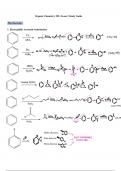
-
Organic Chemistry 302 reagents and mechanisms
- Summary • 8 pages • 2024
-
- $9.39
- + learn more
In depth mechanism reactions for all aldehydes and ketones, benzenes, carboxylic acids and their derivatives. Includes arrow pushing mechanisms and a list of key reagents and products for each functional group
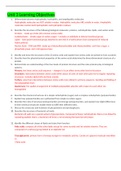
-
CHEM 301 - Unit 3 Review / CHEM301 - Unit 3 Review:LATEST 2021
- Exam (elaborations) • 25 pages • 2021
-
- $11.19
- + learn more
CHEM 301 - Unit 3 Review / CHEM301 - Unit 3 Review:LATEST 2021CHEM 301 - Unit 3 Review/CHEM 301 - Unit 3 Review. Unit 3 Learning Objectives 1. Differentiate between hydrophobic, hydrophilic, and amphipathic molecules. Hydrophobic molecules are NOT soluble in water. Hydrophilic molecules ARE soluble in water. Amphiphilic molecules contain both hydrophobic and hydrophilic residues. 2. Describe the structure of the following biological molecules: proteins, carbohydrates, lipids, and nucleic acids. ...
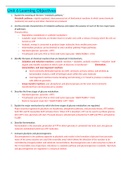
-
CHEM 301 - Unit 6 Review / CHEM301 - Unit 6 Review:LATEST 2021
- Exam (elaborations) • 11 pages • 2021
-
- $11.99
- + learn more
CHEM 301 - Unit 6 Review / CHEM301 - Unit 6 Review:LATEST 2021CHEM 301 - Unit 6 Review/CHEM 301 - Unit 6 Review. Unit 6 Learning Objectives 1. Explain the meaning of the term “metabolic pathway.” Metabolic pathway = tightly regulated, interconnected set of biochemical reactions in which some chemicals (nutrients) are used up and other chemicals are produced 2. List the principle characteristics of metabolic pathways and explain the purpose of each of the two major types of pathways. Characte...
A chart summary of functional groups with oxygen. Physical properties, nomenclature, and additional information relevant to Organic Chemistry 1 is included.

-
CHEM 301 - Unit 6 Review.
- Exam (elaborations) • 11 pages • 2021
-
- $11.49
- + learn more
CHEM 301 - Unit 6 Review. Unit 6 Learning Objectives 1. Explain the meaning of the term “metabolic pathway.” Metabolic pathway = tightly regulated, interconnected set of biochemical reactions in which some chemicals (nutrients) are used up and other chemicals.
One page document summary of organic compounds
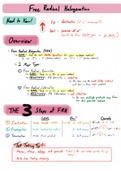
-
Organic Chemistry I - Free Radical Halogenation Overview (CHEM 301)
- Summary • 3 pages • 2021
-
- $5.49
- + learn more
This note covers essential, highly tested concepts for Free Radical Halogenation (FRH) (i.e. FR Bromination and Chlorination). Topics include: 1. The three mechanistic steps of FRH (Initiation, Propagation, Termination) 2. Single vs. double-headed arrows (i.e. electron-pushing diagrams) 3. Selectivity differences between FR Bromination and FR Chlorination 4. What is hv and NBS? 5. Radical resonance (aka “rearrangement”)
Study guide for Orgo Exam 2. Gives brief summaries and practice examples about stereochemistry, conformational analysis, stability, and SN reactions.

$6.50 for your textbook summary multiplied by 100 fellow students... Do the math: that's a lot of money! Don't be a thief of your own wallet and start uploading yours now. Discover all about earning on Stuvia

